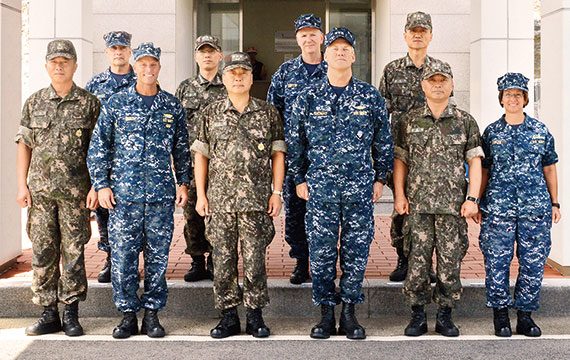Hide and Chic
Tell us what you think. E-mail comments or questions to the editors at letters@northwestern.edu.
Ever wonder about those strange designations we use throughout Northwestern to identify alumni of the various schools of the University? See the complete list.
Find Us on Social Media

Most Americans are familiar with the design of the brown-beige-green camouflage uniforms worn by service members in Iraq and Afghanistan. The multicolored drab outfits are well suited for military service in desert areas.
Less well known is the pattern worn by sailors in the Navy, which features shades of blue and gray in geometric shapes. In truth, they look a bit like the Doppler radar digital readouts seen on the weather report when a very serious storm is approaching.
Officially known as the Navy Working Uniform, sailors called them “blueberries” or “aquaflage” when they were first introduced. At the time U.S. Secretary of the Navy Ray Mabus questioned the need for a camouflage uniform at all for sailors. “The great camouflage they give us is when you fall overboard,” he said, pointing out an obvious impracticality of the sailor and the sea being the same color.
Rear Adm. Lisa Franchetti and members of her staff often wear the blue camouflage to the office at the U.S. Army Garrison Yongsan in landlocked Seoul, where the uniforms have also been the subject of some amusement. During a visit from a U.S. Coast Guard team, one member complimented Franchetti on the blue uniforms. “He then asked, with all seriousness, ‘What do they camouflage you from?’ ” she recalls. “I couldn’t stop laughing.”
Discussions have been underway in Congress and the Department of Defense aimed at reducing the number of variations of camouflage patterns worn by the five branches of the military, which today include at least 10. — T.S.



 Facebook
Facebook Twitter
Twitter Email
Email


